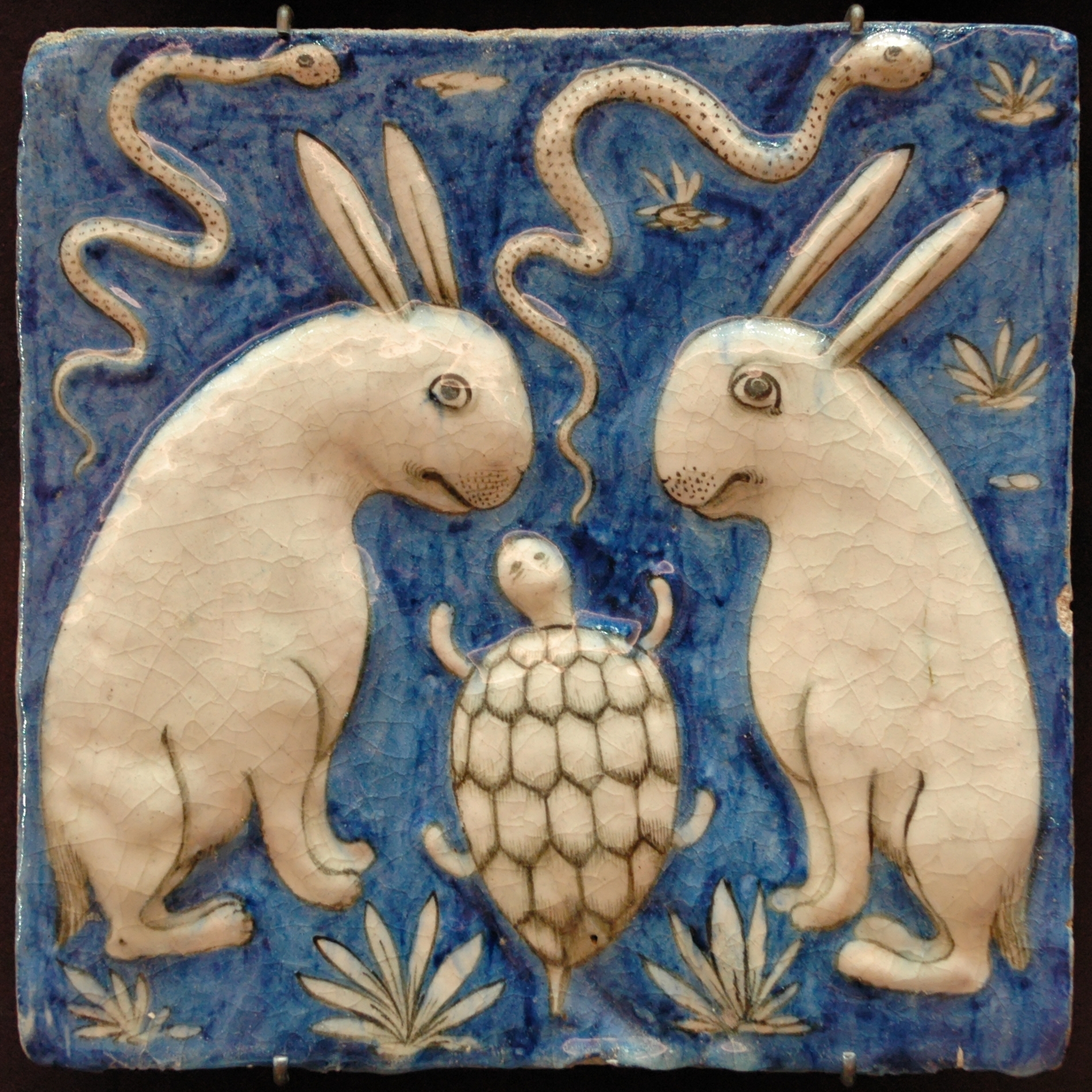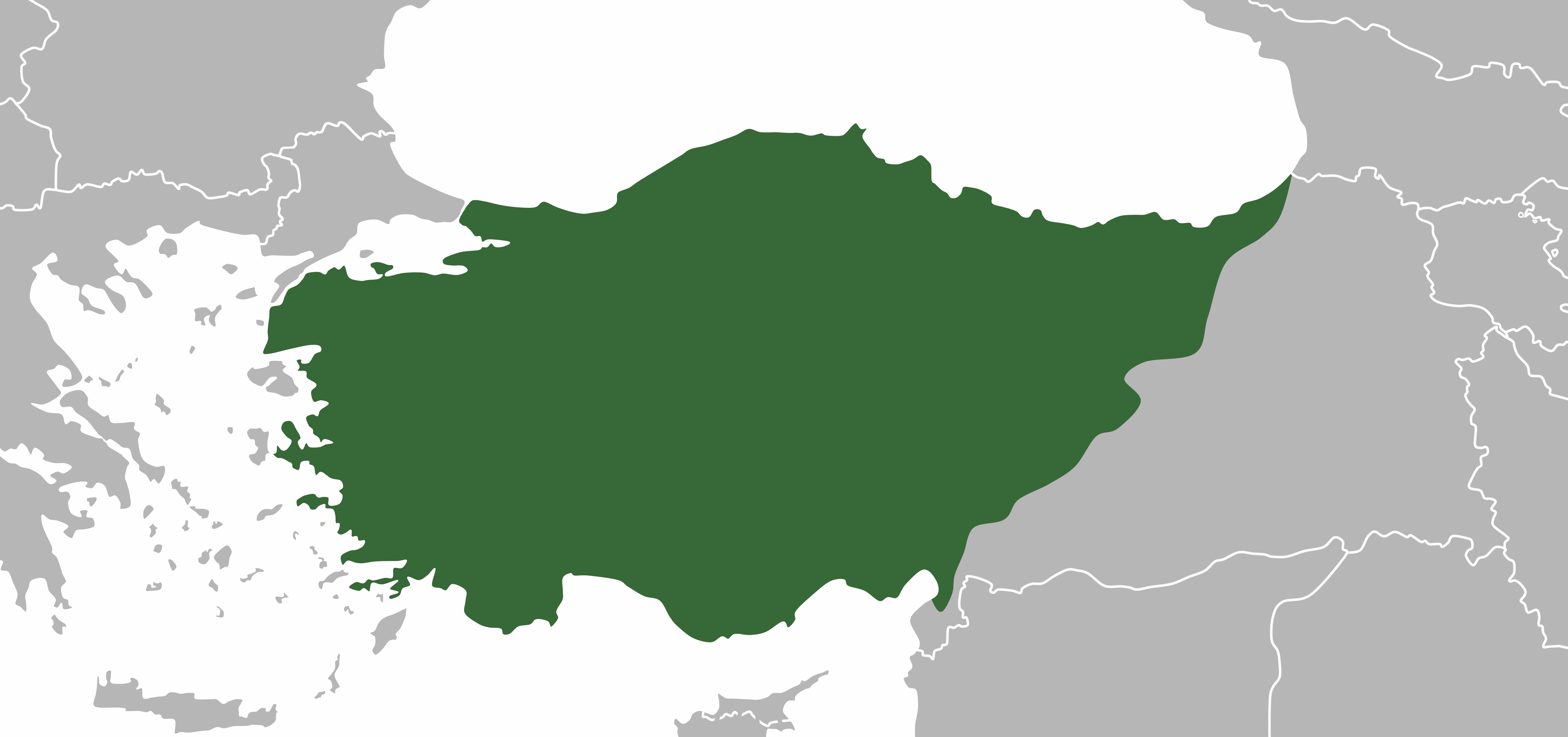|
Shadhavar
Shâd'havâr (Arabic: شادهافار ''(Šādhāfār)'') or Âras (آرس) is a legendary creature from medieval Muslim bestiaries resembling a unicorn. Al-Qazwini said that it lives in the country of '' Rūm'' (Byzantium) and that it has one horn with 42 hollow branches which, when the wind passes through them, produces a pleasant sound that makes the animals sit around and listen. Horns of those creatures, sometimes gifted to kings, can be played like flutes. When played on one side, they produce a cheerful sound, and when on the other, the music is so sad it makes people cry. The scholar Al-Damiri stated a larger number of branches to 72, and al-Mustawfi made shadhavar a ferocious carnivore. The change can be explained as a result of merging its description with another creature from Qazwini, the ''Sirânis'' (سيرانس), a predator that plays music to lure its victims. G. Jacob pointed out similarities between the ''Sirânis'' and the sirens from Greek mythology ... [...More Info...] [...Related Items...] OR: [Wikipedia] [Google] [Baidu] |
Unicorn
The unicorn is a legendary creature that has been described since Classical antiquity, antiquity as a beast with a single large, pointed, spiraling horn (anatomy), horn projecting from its forehead. In European literature and art, the unicorn has for the last thousand years or so been depicted as a white horse- or goat-like animal with a long straight horn with spiraling grooves, cloven hooves, and sometimes a goat's beard. In the Middle Ages and Renaissance, it was commonly described as an extremely wild forest, woodland creature, a symbol of purity and grace, which could be captured only by a virgin. In encyclopedias, its horn was described as having the power to render poisoned water potable and to heal sickness. In medieval and Renaissance times, the tusk of the narwhal was sometimes sold as a unicorn horn. A bovine type of unicorn is thought by some scholars to have been depicted in Indus seal, seals of the Bronze Age Indus Valley Civilisation, Indus Valley civilization ... [...More Info...] [...Related Items...] OR: [Wikipedia] [Google] [Baidu] |
Zakariya Ibn Muhammad Qazwini - An Animal With One Horn Aras - Walters W659106A - Full Page
Zakariya may refer to: People * Zakariya, the father of John the Baptist ( Yahya) in Islam *Zakariya (name), a common personal name in West Asia Places *Zakariya, Iran, a village in western Iran *Zakaria, Iran, a village in northeastern Iran *Az-Zakariyya Zekharia () is a moshav in central Israel. It was formerly a Palestinian village, whose inhabitants were expelled in 1948-9. Located near Beit Shemesh, it falls under the jurisdiction of Mateh Yehuda Regional Council. In it had a population of . ..., Palestinian village depopulated in the 1948 Arab-Israeli War See also * * {{disambig ... [...More Info...] [...Related Items...] OR: [Wikipedia] [Google] [Baidu] |
Arabic Language
Arabic (, , or , ) is a Central Semitic languages, Central Semitic language of the Afroasiatic languages, Afroasiatic language family spoken primarily in the Arab world. The International Organization for Standardization (ISO) assigns language codes to 32 varieties of Arabic, including its standard form of Literary Arabic, known as Modern Standard Arabic, which is derived from Classical Arabic. This distinction exists primarily among Western linguists; Arabic speakers themselves generally do not distinguish between Modern Standard Arabic and Classical Arabic, but rather refer to both as ( "the eloquent Arabic") or simply ' (). Arabic is the List of languages by the number of countries in which they are recognized as an official language, third most widespread official language after English and French, one of six official languages of the United Nations, and the Sacred language, liturgical language of Islam. Arabic is widely taught in schools and universities around the wo ... [...More Info...] [...Related Items...] OR: [Wikipedia] [Google] [Baidu] |
Bestiaries
A bestiary () is a compendium of beasts. Originating in the ancient world, bestiaries were made popular in the Middle Ages in illustrated volumes that described various animals and even rocks. The natural history and illustration of each beast was usually accompanied by a moral lesson. This reflected the belief that the world itself was the Word of God and that every living thing had its own special meaning. For example, the pelican, which was believed to tear open its breast to bring its young to life with its own blood, was a living representation of Jesus. Thus the bestiary is also a reference to the symbolic language of animals in Western Christian art and literature. History The bestiary — the medieval book of beasts — was among the most popular illuminated texts in northern Europe during the Middle Ages (about 500–1500). Medieval Christians understood every element of the world as a manifestation of God, and bestiaries largely focused on each animal's religious ... [...More Info...] [...Related Items...] OR: [Wikipedia] [Google] [Baidu] |
Zakariya Al-Qazwini
Zakariyya' al-Qazwini ( , ), also known as Qazvini (), (born in Qazvin, Iran, and died 1283), was a Cosmography, cosmographer and Geography in medieval Islam, geographer. He belonged to a family of jurists originally descended from Anas bin Malik (a companion of the Islamic prophet Muhammad) which had been well established in Qazvin long before al-Qazwini was born. His most famous work is the Aja'ib al-Makhluqat, (), a seminal work in cosmography. He is also the author of the geographical dictionary (). Career Born in Qazvin to a Persianized family of Arab ancestry, al-Qazwini served as a legal expert and judge in several localities in Iran. He traveled around in Mesopotamia and the Levant, and finally entered the circle patronized by the Ilkhanid governor of Baghdad, Ata-Malik Juvayni (d. 1283 CE). It was to the latter that al-Qazwini dedicated his famous cosmography titled Aja'ib al-Makhluqat, (). This treatise, frequently illustrated, was immensely popular and is preser ... [...More Info...] [...Related Items...] OR: [Wikipedia] [Google] [Baidu] |
Rūm
Rūm ( , collective; singulative: ''Rūmī'' ; plural: ''Arwām'' ; ''Rum'' or ''Rumiyān'', singular ''Rumi''; ), ultimately derived from Greek Ῥωμαῖοι (''Rhomaioi'', literally 'Romans'), is the endonym of the pre-Islamic inhabitants of Anatolia, the Middle East and the Balkans and date to when those regions were parts of the Eastern Roman Empire. The term ''Rūm'' is now used to describe: *The city of Rome in Italy, and the people living in it. * Remaining pre-Islamic ethnocultural Christian minorities living in the Near East and their descendants, notably the Antiochian Greek Christians who are members of the Greek Orthodox Church of Antioch and the Melkite Greek Catholic Church of Syria, Lebanon, Jordan, Israel, Palestine, and the Hatay Province in Southern Turkey whose liturgy is still based on Koine Greek. * Orthodox Christian citizens of modern Turkey originating in the pre-Islamic peoples of the country, including Pontians from the Black Sea mountains in t ... [...More Info...] [...Related Items...] OR: [Wikipedia] [Google] [Baidu] |
Byzantine Empire
The Byzantine Empire, also known as the Eastern Roman Empire, was the continuation of the Roman Empire centred on Constantinople during late antiquity and the Middle Ages. Having survived History of the Roman Empire, the events that caused the fall of the Western Roman Empire in the 5th centuryAD, it endured until the fall of Constantinople to the Ottoman Empire in 1453. The term 'Byzantine Empire' was coined only after its demise; its citizens used the term 'Roman Empire' and called themselves 'Romans'. During the early centuries of the Roman Empire, the western provinces were Romanization (cultural), Latinised, but the eastern parts kept their Hellenistic culture. Constantine the Great, Constantine I () legalised Christianity and moved the capital to Constantinople. Theodosius I, Theodosius I () made Christianity the state religion and Greek gradually replaced Latin for official use. The empire adopted a defensive strategy and, throughout its remaining history, expe ... [...More Info...] [...Related Items...] OR: [Wikipedia] [Google] [Baidu] |
Al-Damiri
Al-Damiri (1341–1405), the common name of Kamal al-Din Muhammad ibn Musa al-Damiri (), was a Shafi'i Sunni scholar, jurist, traditionist, theologian, and expert in Arabic from late medieval Cairo. He was best known for his writing on Muslim jurisprudence and natural history. He wrote the first known systematic work on zoological knowledge in Arabic, the '' Ḥayāt al-ḥayawān al-kubrā'', 1371. Life Al-Damiri was born in 1341 (742 AH) in Cairo, where he lived, learned, graduated, and died. His family’s origins go back to the countryside of Lower Egypt, from the village of Damira, close to Samannud on the eastern or Damietta branch of the Nile in the Delta. Since his youth, he worked with his father in a sewing shop, and his love for animals continued to grow with him, along with his passion for science and other knowledge, which prompted his father to direct him to complete his religious studies at Al-Azhar University. He mastered the sciences of theology, jurisprudenc ... [...More Info...] [...Related Items...] OR: [Wikipedia] [Google] [Baidu] |
Siren (mythology)
In Greek mythology, sirens () are female humanlike beings with alluring voices; they appear in a scene in the ''Odyssey'' in which Odysseus saves his crew's lives. Roman poets place them on some small islands called Sirenum scopuli. In some later, rationalized traditions, the literal geography of the "flowery" island of Anthemoessa, or Anthemusa, is fixed: sometimes on Cape Pelorum and at others in the islands known as the Sirenuse, near Paestum, or in Capreae. All such locations were surrounded by cliffs and rocks. Sirens continued to be used as a symbol of the dangerous temptation embodied by women regularly throughout Christian art of the medieval era. "Siren" can also be used as a slang term for a woman considered both very attractive and dangerous. Nomenclature The etymology of the name is contested. Robert S. P. Beekes has suggested a Pre-Greek origin. Others connect the name to σειρά (''seirá'', "rope, cord") and εἴρω (''eírō'', "to tie, join, faste ... [...More Info...] [...Related Items...] OR: [Wikipedia] [Google] [Baidu] |
Greek Mythology
Greek mythology is the body of myths originally told by the Ancient Greece, ancient Greeks, and a genre of ancient Greek folklore, today absorbed alongside Roman mythology into the broader designation of classical mythology. These stories concern the ancient Greek religion's view of the Cosmogony, origin and Cosmology#Metaphysical cosmology, nature of the world; the lives and activities of List of Greek deities, deities, Greek hero cult, heroes, and List of Greek mythological creatures, mythological creatures; and the origins and significance of the ancient Greeks' cult (religious practice), cult and ritual practices. Modern scholars study the myths to shed light on the religious and political institutions of ancient Greece, and to better understand the nature of mythmaking itself. The Greek myths were initially propagated in an oral tradition, oral-poetic tradition most likely by Minoan civilization, Minoan and Mycenaean Greece, Mycenaean singers starting in the 18th century&n ... [...More Info...] [...Related Items...] OR: [Wikipedia] [Google] [Baidu] |







